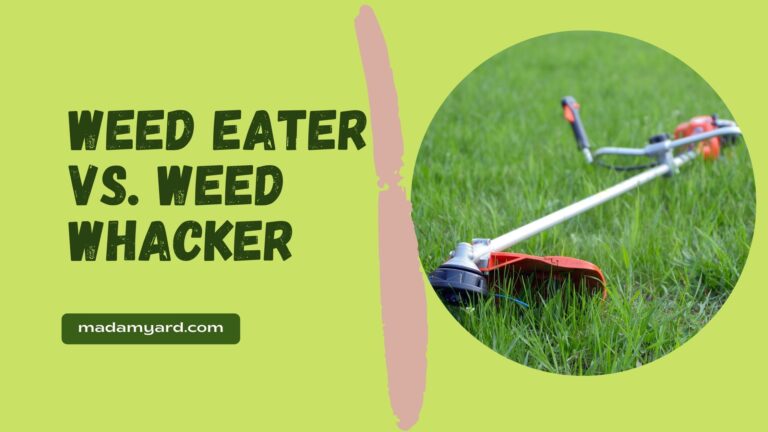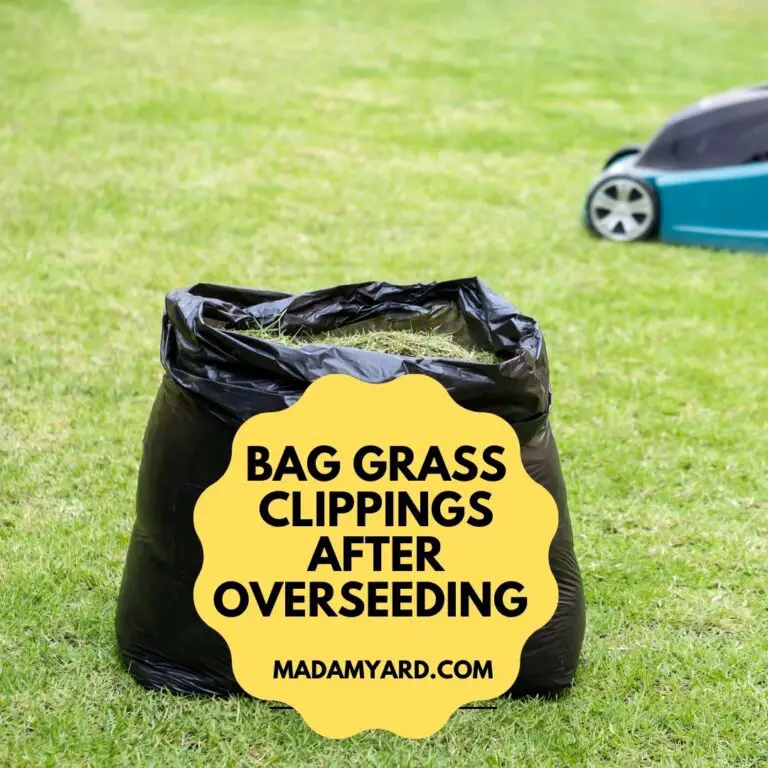Best Tall Fescue Grass Seed For Your Lawn (2023)
Tall fescue, native to the European continent, was introduced to the United States in the early 1800s and quickly became one of the most popular grass kinds.
There are over a hundred different types of fescue grass in the genus Festuca spp. There are hundreds of tall fescue cultivars, more developed in the hunt for the toughest lawn seed.
Tall fescue lawns can be created by laying sod. However, tall fescue is commonly grown from seed because it is a fast-growing grass. The best tall fescue grass seed will differ depending on the temperature and location.
Some types thrive in deep shadow, while others thrive in broad sun and are more drought and heat tolerant.
Tall fescue cultivars are most suited to lawns in the northern portion of the United States. However, there are notable exceptions.
Learn more about this lovely emerald green grass and why the fescue seed products listed below are among the finest for a range of lawn settings.
What Is Tall Fescue?
It’s rare to find grass that thrives on clay soil. Tall fescue grass is one of these sod grasses, with minimal mowing and fertilizing requirements. In the summer, it does, however, require thorough watering.
It may be used as a lawn in either sunny or partly shaded conditions. Unlike warm-season grass species, tall fescue in lawns stays green in the winter. The plant comes in many cultivars, some of which look like fine fescue but have broader leaf blades.
Tall fescue is perfect for the lazy gardener since it requires minimal mowing and little fertilizer. Tall fescue is turf grass that can withstand extreme heat and drought.
It’s dark green grass with coiled leaves that has a gritty feel. It generally spreads by seed and grows most vigorously in the spring and fall, and the grass has deep roots.
The plant produces a small panicle with reniform spikelets 3 to 4 inches long in the springtime. Tall fescue grass is a bunch of grass, and established lawns may ultimately die out in some regions, necessitating the replacement of the grass.
Best Tall Fescue Grass Seed 2021
1. Pennington Smart Seed Best Tall Fescue Grass Seed, 20 lb
It is a high-quality tall fescue grass seed combination. Why is it so expensive? It all starts with Penkoted, Pennington’s proprietary smart technology. In addition, the fescue grass mix is suitable for a wide range of climates and soil types, including those with poor drainage.
Furthermore, it is disease-resistant, drought-resistant, heat-resistant, cold-resistant, and shade-resistant. As a consequence, you’ll get a dark green lawn that’s quite hardy.
Pennington Smart Seed is a low-growing grass seed that grows slower than other fescues and requires less mowing. Year after year, the smart seed will consume 30 percent less water.
The revolutionary Penkoted Seed Technology of Pennington Seed improves each seed’s ability to mature into a healthy plant, resulting in a lush, beautiful lawn.
It takes between 7 and 21 days for the smart seed grass seed to germinate. This grass also requires less mowing than other fescues and can adapt to many soil types, including poor drainage.
It is the best option for those looking for superior quality. Other characteristics, such as low care and the unique dark green color of the grass, add to its uniqueness.
Pros:
- Maintains a lovely green color throughout the growing season
- Generates a consistent sod after growth
- Takes less mowing
- Ideal for areas that receive 4 to 8 hours of light daily.
Cons:
- Pets and children should be kept away from the seed until it has been watered.
- The seeds have chemicals.
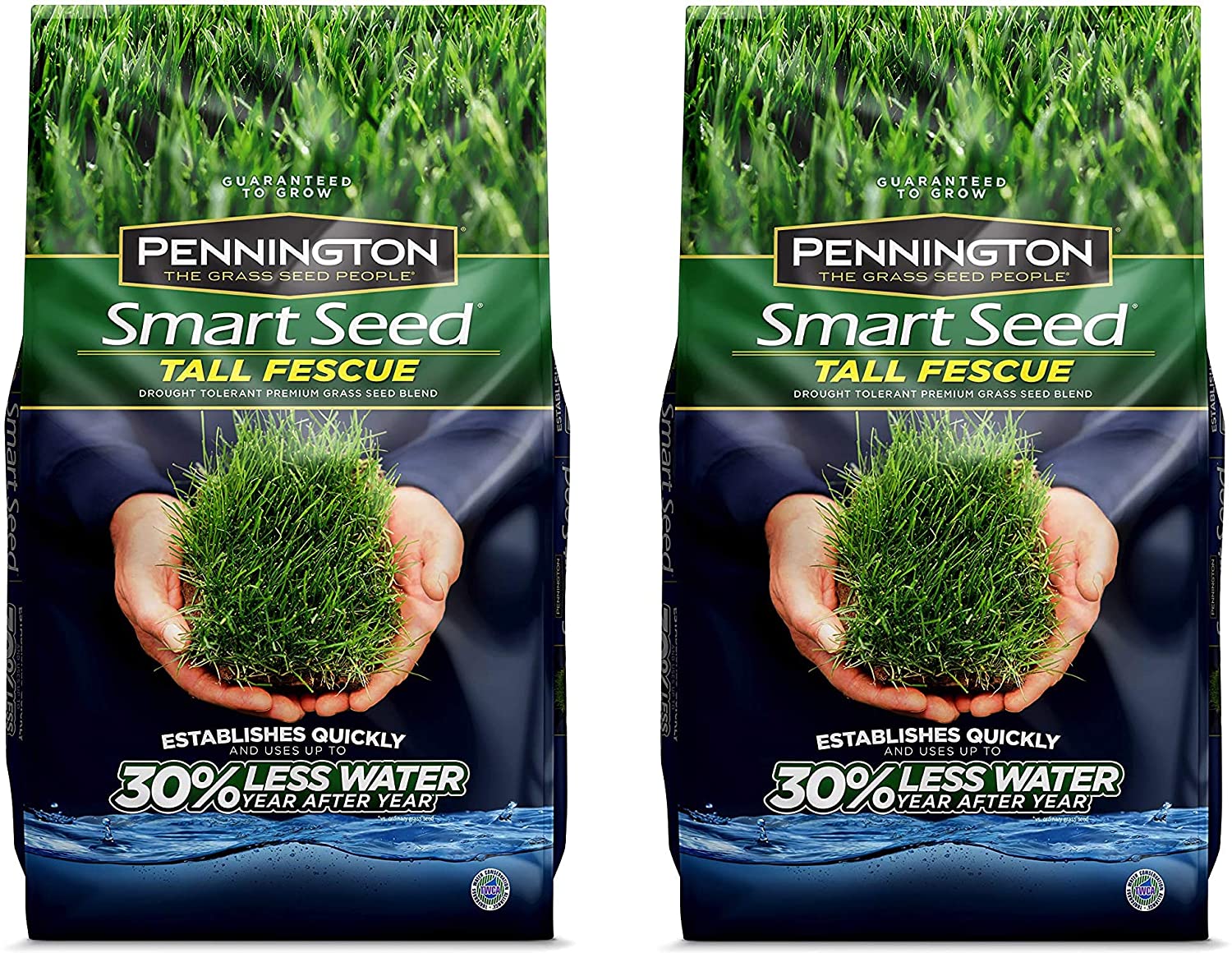
2. Scotts Turf Builder Tall Fescue Mix Grass Seed, 7 Lb
Scotts Turf Builder Tall Fescue Mix is a heat-tolerant tall fescue mix with adaptable coated seeds that may use in many situations.
It comprises a mix of southern-bred tall fescue cultivars that are meant to boost the lawn’s heat resilience.
The coating comprises a water-retaining agent to keep seeds moist before germination, an antifungal to prevent grass disease, and a nutrient to speed up the development of early sprouts.
The tall fescue mix from Scotts comes in a 7-pound bag, enough to seed 1,750 square feet. This heat-resistant tall fescue mix is ideal for transition states, such as Arkansas, Tennessee, and the upper half of Louisiana, which fall between USDA Zones 7 and 8.
It grows well in sunny and shaded regions of a yard, making it ideal for overgrown lawns in northern states.
Pros:
- Faster, thicker, greener grass
- Long-lasting southern bred grass that thrives in complex summer conditions of sun, shade, and high traffic
Cons:
- Seeds are tinted blue

3. Pennington Kentucky 31 Tall Fescue Penkoted Powder Coated Grass Seed
Pennington Kentucky 31 Tall Fescue grass seed will assist you in creating a lovely lawn with excellent texture and color.
This specific mix of grass seeds is heat and drought tolerant, so you won’t have to worry about the many threats to your lawn.
This grass seed may be grown in full sun or light shade. You may produce a beautiful lawn that stays healthy throughout the growing season thanks to its special seed treatment, and you won’t have to worry about the seeds not sprouting.
It has a fungicide that protects it from a variety of illnesses. It also absorbs more water and needs less to maintain its vibrant green hue.
Pros:
- Needs little work to keep it up.
- Tolerates high traffic well
Cons:
- Grass turns a light green color as a consequence.
- The seeds go dormant when it gets too cold.
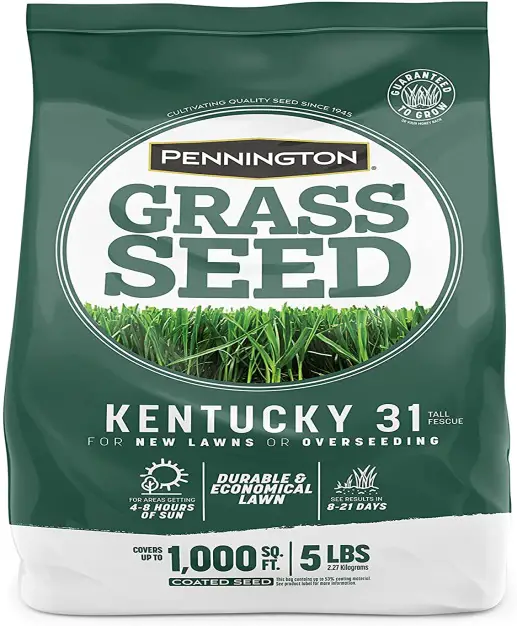
4. Greenview Best Turf-Type Tall Fescue Grass Seed
It is the ideal tall fescue combination that can handle both sun and shade conditions.
Because of the high-quality tall fescue seed, this is achievable, and it permits the seeds to grow naturally but powerfully.
Even though they are not coated, their germination rate is high enough to qualify them as a premium product.
It is the best choice to attempt if your lawn has a lot of weeds. These seeds are 99.9% weed-free, ensuring that you contribute from the beginning to solve a serious problem.
They’re also uncoated, and the producer chose some of the highest-quality types. It implies you’re getting a more natural product with the same impact and quality as other coated seeds.
Pros:
- It provides optimum seed coverage
- There are no fillers in the seeds
- The grass can withstand prolonged periods of drought and heat.
Cons:
- For it to perform well, it needs mulch and starting fertilizer.
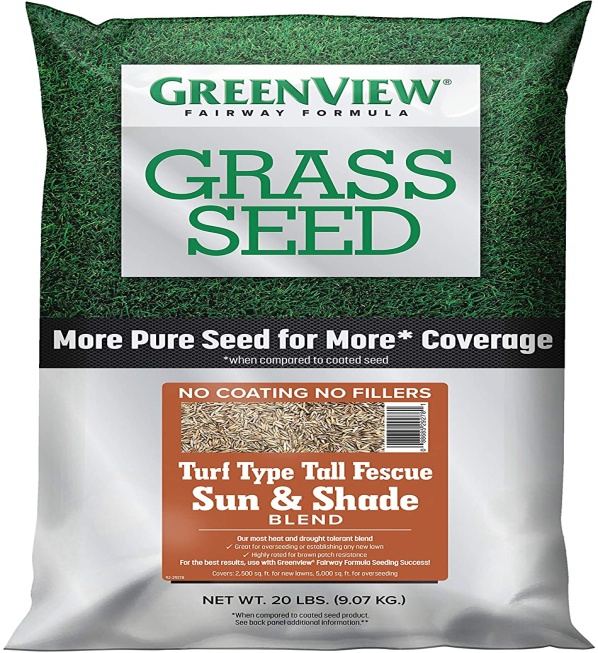
5. K-31 Kentucky 31 Tall Fescue Grass Seed
Kentucky 31 (K-31) is a state in the United States. Tall Fescue grass seed will help you create a beautiful, long-lasting lawn. The seeds are well anchored to ensure long-term viability.
The grass grows well in both the sun and the shade, so with a short, delicate loving care in the correct season, you can have a beautiful lawn in no time.
It’s also drought and wears resistant, so you can relax and enjoy your lawn without worrying about what other animals could be doing to it, such as dogs peeing on it or old drivers driving over it.
Pros:
- Low-cost and simple to deploy
- Water-repellent
- Long-lasting, even in high-traffic areas.
- A beautiful shade of green
- Kentucky 31 varietals with increased heat tolerance
Cons:
- Grass seed only lasts six months; grass seems patchy.
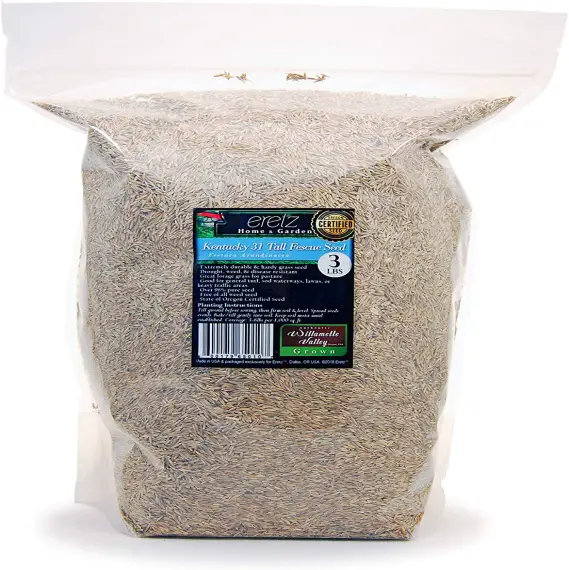
How To Plant Fescue Grass?
With appropriate preparation, starting your fine fescue lawn is simple. We recommend germination during the fall months when peak temperatures are around 80 degrees.
Select A Seed
When selecting fescue grass seed, ensure that the plant blend is of excellent quality and acquired from a reliable supplier.
The germination rate should be less than 80%, and the crop, weed, and inert matter percentages should be close to 0.00%. When you purchase the best grass seeds, these rates are listed on the packaging.
The seed planting rates vary depending on the grass type. Tall fescues should be sown at a rate of 10 lbs. per 1,000 sq. ft.
On the other hand, other species of fescue have smaller seeds and require 5 pounds of fertilizer per 1,000 square feet.
Soil Preparation
Well-structured soil is more capable of absorbing water and minerals. It also stimulates the fescue’s root to develop deeper, giving it better access to the nutrients it needs.
A DIY pH testing kit may be used to determine if the soil is acidic or alkaline. Fescue grass prefers acidic soil with a pH of 5.6 to 7.
The availability of nutrients to the plant will be ensured if the soil levels are at appropriate levels, allowing it to grow.
If your soil test reveals that your soil is too acidic (pH six or below), apply lime to obtain the desired pH values. If alkaline levels (pH seven and above) are detected, granular gypsum should be applied to the soil.
However, both lime and gypsum require 2 to 3 months to respond. The procedure may be repeated until the pH level in the soil reaches the desired level, so make sure to include this time in your grass planting schedule.
You may need to till the land if the terrain you choose for your landscaping is uneven. This method would also assist in breaking up the soil, allowing for increased water absorption and root development.
Planting A Seed
When you’re happy with the soil’s state, evenly distribute the seeds on the ground. Many individuals opt to cover the seeds after being planted to keep the moisture in.
Cover them with a 14-inch layer of peat moss or fluffy topsoil if you choose to do the same.
Gently water the seeds till they sprout. As the grass grows, you can reduce the frequency of watering.
For at least four weeks after planting, don’t mow the lawn. Fertilizers are also being reintroduced.
Tall Fescue Lawn Care and Maintenance
Tall fescue, which is the go-to lawn for much of Southern Australia in the cooler months, is ideal for many reasons.
There’s almost no better choice for the milder climes of Australia than this unfussy, low-maintenance grass for its durability, whether it’s in the face of a protracted drought or surviving with a harsh frost.
Low maintenance does not imply any upkeep, and while it can withstand complex circumstances, it may require some assistance if you want it to grow.
Here are some fundamental recommendations to help you make your fescue patch the talk of the neighborhood.
Watering
In the colder adaption zones, watering or irrigating fescue grass should be done seldom. Fescues are a more drought-resistant cool-season grass, and these areas often have more air moisture and wetter nights than warmer climes.
Fescue grass is drought resistant, which means it may fall dormant in extreme circumstances of water deprivation and come back when enough water is available. It isn’t to say that grass can’t live without water.
Fescue grass prefers water if and when it is available, but it will get diseased if it receives more water than it needs, especially in humid areas.
A preventative fungicide treatment regimen may be necessary to decrease or prevent disease. Because of the greater rate of evaporation, fescue grass planted in the lower temperate zone will need to be watered when the weather is drier than regular.
Overseeding
You can keep your fescue in a lovely green tint all year if you maintain a consistent lawn management regimen. Overseeding may be the solution if you’ve noticed some thinner spots or a less thick sod.
Overseeding is best done in the fall or spring. Lawn thinning can occur for many causes, including insect damage, heat stress, and disease.
Overseeding may be a terrific way to give your grass a new lease of life. Every year, new fescue kinds with varying vigor are released, and they may be able to keep your lawn looking healthy even if your original variety is failing.
To overseed fescue, follow these steps:
- Mow your lawn as low as the variety recommends
- Rake to remove clippings and debris
- Aerate the spot
- Apply a fresh seed fertilizer
- Overseed at the required rate
- Water the grass for 2-3 weeks to keep it wet while the seeds develop.
Fertilizing
Tall fescue grows well on low-fertility soils without fertilization. Still, it thrives in higher-fertility soils. 2 1/2 to 3 pounds of nitrogen per 1000 square feet per year in split increments is the optimal application.
The optimum time to fertilize a cool-season grass like fescue is in the fall when the nitrogen division is highest, and the worst period is in the summer when the nitrogen division is lowest.
To reduce disease and pest infestation, avoid encouraging growth during the warmest portion of the year, especially in the southern half of the transitional area. During the summer, do not fertilize.
Sod
Fescue is available as sod. On the other hand, Fescue must be blended with another grass, such as bluegrass, to be transformed into the sod. Because fescue is a bunch of grass, it lacks the structure needed to hold sod together.
A grass with rhizomes or stolons is required for the sod to hold together. Rhizomes, or stems that grow slightly below the soil surface, are produced by bluegrass.
The root system of the sod is severed when it is harvested. The bluegrass rhizomes hold the sod together and prevent it from crumbling.
Mowing
When it comes to chopping down your tall fescue, the name is everything. Mowing to a blade height of 7-10cm is optimal, but if your grass needs to withstand a little pounding around on things like sports fields, you can go lower.
Mowing below 4-5cm will dry up the grass’s sod and cause it to thin out, especially in hotter climates.
It’s also a good idea to take advantage of the newly mown grass’s visibility to look for any possible concerns, such as pests, disease, or thinning.
Conclusion
Tall fescue may help with a variety of lawn care issues. This medium-green grass, which grows in tight bunches, appealed to us. Another bonus in our book is that it can withstand wear. It’s also complex to beat grass that stays green throughout winter and doesn’t become dormant and brown.
Another advantage of Kentucky 31 Tall Fescue is that it creates a more heat-tolerant lawn than other tall fescue types. It grows lush grass with a coarse, green texture that can withstand heavy traffic. We also appreciate the fact that Kentucky 31 is an older variety.
In places with varying environmental conditions, establishing a lawn can be difficult, and it makes sense to choose grass suited to the unique demands that your location entails.
Tall fescue is a tough grass that can fulfill your lawn’s use and maintenance needs thanks to its vast response to many climate conditions.




